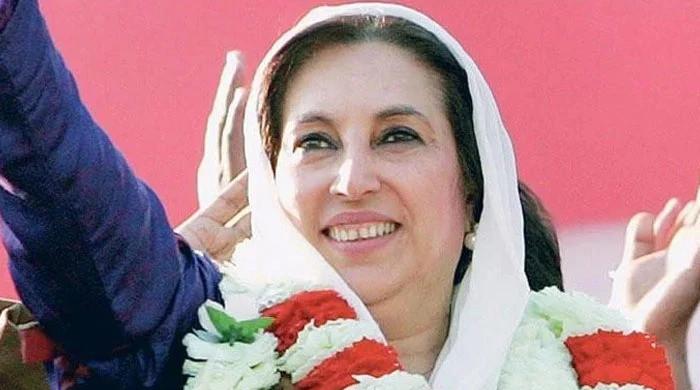Judicial accountability
Without accountability, judicial independence has the potential to act as a shield behind which judges can conceal possible unethical behaviour.
February 27, 2018
Last week, Chief Justice Saqib Nisar assured lawyers during an address at the Islamabad High Court Bar that the Supreme Judicial Council would decide all pending references against judges by June, 2018. In doing so, he echoed the promises made not too long ago by former Chief Justice Anwar Zaheer Jamali, who had declared 2016 as the ‘year of judicial accountability’.
Without significant reform of the judicial accountability mechanisms, however, such promises appear hollow.
Judicial independence has long been a flashpoint in Pakistan, as illustrated by the movement more than a decade ago to reinstate the unlawfully deposed former Chief Justice Iftikhar Chaudhry.
However, accountability has largely been absent from this discourse.
Without accountability, independence has the potential to act as a shield behind which judges can conceal possible unethical behaviour.
Indeed, judicial accountability is a part and parcel of judicial independence, since a judge whose conduct and decisions are influenced by extra-legal elements cannot be independent under international standards, including the UN Basic Principles on the Independence of the Judiciary, therefore, the independence and accountability of the judiciary are inextricably linked.
The only disciplinary mechanism for judges of the superior judiciary in Pakistan is one administered by the Supreme Judicial Council. This mechanism that has been rendered ineffective because of secrecy and the prolonged delays in deciding complaints: reportedly, 90 percent of cases before the Council become moot as the accused judges retire while their cases are still pending.
The Council is a constitutional body comprising of five senior Supreme and High Court judges. Disciplinary proceedings may be initiated before the Council of its own motion; if there is information from ‘any source’; or it is the opinion of the President of Pakistan that a judge from the superior judiciary is either incapable of performing his or her duties due to mental or physical incapacity, or that he or she may have engaged in misconduct.
The Council is empowered to hold inquiries related to allegations and to make recommendations to the President of Pakistan, who subsequently may remove the judge from office.
The procedures of the Supreme Judicial Council (SJC), however, are completely secret and opaque, and its Procedure of Inquiry, 2005, stipulates that, “proceedings of the Council shall be conducted in camera and shall not be open to public.”
In 2016, a petition was made to the Supreme Court to make the proceedings of the Council more transparent. Among other things, the petition requested the Court to direct the SJC to disclose information regarding the total number of complaints or references registered with the SJC since its inception and their current status.
The Supreme Court, however, dismissed the petition, stating “it is one of the important aspects of proceedings before the SJC that at every stage of its proceedings…complete confidentiality and secrecy is to be maintained about the actions taken by the council.”
The decision, which still stands, is troubling for its sweeping and overbroad assertion of non-disclosure and falls afoul of international standards on the independence and accountability of the judiciary, as well as principles related to the fair administration of justice.
Transparency should be a key aspect of disciplinary proceedings against judges. While all aspects of cases referred to the SJC need not be publicized, any measures seeking confidentiality must be individually justified as necessary and proportionate to protect a specified important public interest. The Supreme Court’s decision that “complete confidentiality and secrecy is to be maintained about the actions taken by the Council” - including information of public interest such as the number of complaints referred to the Council and the time taken for the complaints to be adjudicated - is plainly overbroad. It is unnecessary, disproportionate to the purpose and therefore unreasonable.
Furthermore, international standards call for keeping accountability proceedings against judges confidential only at the initial stages, and that too for the specific purpose of protecting the reputation of the judge against unwarranted damage.
Information such as the number of cases being considered by the SJC without naming individual judges and the time taken for the Council to reach a decision on the complaints clearly do not risk damaging the reputation of the individual judges or the judiciary as a whole. In fact, other important interests such as the effective administration of justice, the right to information of the public at large, and the rights of the complainants make it imperative that, at the very least, such information must be made public.
Moreover, neither the public nor the other branches of the State can exercise their functions in providing checks and balances if they do not have access to information on what the Supreme Judicial Council is actually doing. Such considerations have, for example, informed the Consultative Council of European Judges in their call on judicial accountability bodies to undertake the “publication of decisions taken which are both formal and final, in order to inform, not only the whole of the judiciary, but also the general public of the way in which the proceedings have been conducted and to show that the judiciary does not seek to cover up reprehensible actions of its members.”
In addition to issues around lack of transparency, what constitutes “misconduct” for judges of the superior judiciary is also not entirely clear. While the current understanding of misconduct under the code of conduct for judges of the Supreme and High Courts seems limited to financial corruption, nepotism and misuse of authority, perhaps what is also needed is the recognition of the role of judges in undermining human rights protections, facilitating violations or impunity for such violations, or undermining the separation of powers.
One of the ways this can be done is to revise the judicial code of conduct to bring it in line with international standards. This would include reflecting the duty of judges to guarantee and protect human rights, as well as exercising power within their own constitutional sphere so as not to “encroach on the legitimate discharge of constitutional functions by the other institutions”, as provided under the Commonwealth (Latimer House) Principles.
For Chief Justice Saqib Nisar’s judicial accountability agenda to be meaningful, he must first ensure transparent and effective procedures for accountability. This would be an important step towards restoring public confidence and trust in the courts and bringing Pakistan closer to an independent judiciary, in a truer sense of the term.
- Omer is a legal adviser for the International Commission of Jurists (ICJ). She tweets @reema_omer
Note: The views expressed by the author do not necessarily reflect the official policy or position of Geo News, The News or the Jang Group









